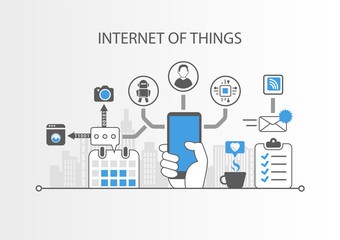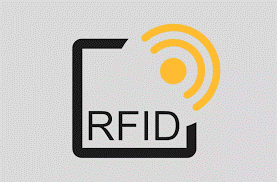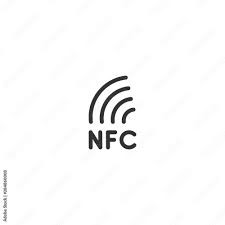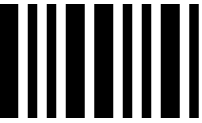The supply chain network today has been under more pressure than ever before, and it is not just COVID-related disruptions impacting every aspect of shipping and legacy logistics. Supply chain management is a complex and often confusing process that requires careful planning and monitoring of the network. The importance of digitization and automation today cannot be underestimated.
According to a 2019 review from The International Journal of Product Research “supply chains are operating under an ever-changing environment and are vulnerable to a myriad of risks at all levels. This environment is an ever-changing landscape because of many factors. Many supply chains extend over wide geographical areas and are vulnerable to global risks.
Customers are increasingly demanding in terms of product customization, price, and level of service.” Improving, supply chain optimization and updating routine processes and procedures are critical to maintaining a competitive advantage today.
Added to this is the increasing complexity of goods and products, making it more time-consuming to package, handle, and ship popular items. The rapid technological changes, the continuous introduction of new products, the changing service provided by logistics providers, and shifting market demands keep the supply chain under pressure.
And on top of all that, changing climates- weather and global conflicts- puts global supply chains under increasing pressure. Warehouse automation, delivery tracking, and digital shipping services help to offset these sorts of obstacles for shippers, M-commerce managers, and transportation service providers.
The fastest and most effective way to combat this is to improve tracking and monitoring services with innovative tech and tools. Many of the electric devices/sensors that are applied to intelligent packaging use the global interconnected network.
The concept of IoT (internet of things) within warehouse operations and shipping logistics is quite complex. It is aimed at providing global corresponding network infrastructure and improved supply chain optimization for connecting objects to the cyber-physical world.

The utilization of IoT tools (Internet of Things)
Many of the electric devices/sensors that are applied to smart packaging use the global interconnected network called the Internet of Things. The concept of IoT (internet of things) is aimed at providing a global interconnected network infrastructure for connecting objects to the cyber- physical world. It enables companies to track and trace their products which are equipped with sensors devices (Cheung, 2018).
IoT Tools- A Logistics Providers’ Friend
The main IoT tools are elaborated upon below.

RFID (radio-frequency identification): is an electronic sensor and data collecting system using RF signals located on packages to monitor critical parameters such as temperatures, pressure, and vibration which captures and communicates data about how the products are moving along the supply chain and enable organizations to track and trace the product during its journey from manufacturer to customers (Cheung, 2018). The use of smartphones to increase the supply chain visibility and anytime access by using available handled devices is quickly standardizing for companies’ solutions. The technology is optimal to track products that are in transit (Fedex, 2020).
Traditionally, inventory counts were a complex exercise done manually about once a year but RFDI technology enables retailers such as Macy’s to monitor stock monthly bringing accuracy from 60% to over 90%. Macy’s reported that it experienced 2-3% inventory inaccuracy per month which is 24% annually but by implementing RFID solutions it minimized out-of-stock situations, provides real-time merchandise location data and allows to track their inventory throughout the retail supply chain (Bianchi, 2017).

This is non-contact near-field communication technology. NFC reader is a tool that can be integrated into the warehouse management picking verification system. The benefits of using such technology are widespread for customers, retailers, shippers, and logistics providers. Its ability to sync with smartphones and mobile devices helps improve delivery. NFC enabled devices are increasingly popular in today’s shipping lanes.
Enhanced supply chain optimization allows faster communications, automated updates, and push notifications to be sent in real-time between fulfillment partners and e-business owners. Furthermore, it helps eliminate the paperwork and provides information about the inside of the package. This can include the location of the product inside the warehouse, the description of the item, and the number of items inside the warehouse.
Customers who have an NFC chip or NFC tag enable phones to read information from the NFC on the label with additional information about the product and find out if the bottle was in some way misused. It also allows the company to track the product during the whole supply chain, storage, and opening times (Vasić, 2018).

Barcode label:
Plenty of processes involved in shipping and logistics today rely on administrative documentation and legacy logistic basics. Using these barcodes and rack labels save a lot of time for the different employees and managers involved in the process.
The packing and picking process is simplified as they only need to scan the barcode and receive all the required information about a given product instantly. The barcode label also benefits in managing inventory by tracking the exact location and movements of products. They can even make inventory management easier in the long run.
This applies to whether the movement is in or out of the warehouse facility. All this improved tracking helps to eliminate delays and errors. Barcode labels are usually called the foundation of automated warehouses. It was the first data tracking technology and referred to one-dimensional data, meaning that they can only hold information in the horizontal dimension.
They provide several crucial benefits such as inventory tracking, arrival planning, and improved picking efficiency. Areas such as traffic optimization decreased human data entry errors, and reduced out-of-stock situations also see great improvement (Jules, 2020).
Figure 1Vasić, Đ. &. (2018). NFC Technology and Augmented Reality in Smart Packaging.
The table above compares the different CRM technological devices in terms of speed, scalability, devices needed, sensing distance, and error rate. It is obvious that compared to the verification systems, the manual work is slower, and error rates are high, giving more work for logistics providers (Vasić, 2018). A strong supply chain management software platform can make all the difference in the world!
Improve Shipping Tracking and Delivery With a Strong Logistics Provider
All the different devices result in advantages for supply chains through the use of IoT tools and help companies in their daily operations. From e-commerce websites to handheld devices to remote networking and logistics, every step of the process can be improved with the right logistical approach.
Although the initial cost concerning new sensor technologies is high, the inherent opportunities incentivize companies to invest in the integration of IoT. Whether it is barcode automation, NFC forum platforms, or RFID tools, innovations are helping companies offer better shipping options for their customers. The e-commerce challenges facing companies today are only going to intensify as demand continues to grow.
Having a strong and reliable supply chain management SCM in place can help shippers, retailers, and customers reap the benefits of digitalization. Would you like to know more about how ModusLink can implement IoT tools when managing logistics providers and see how easy it can be to improve supply chain optimization? If so, then contact ModusLink today to get started!
Bibliography
Bahron, Zied and Ben-Daya, Mohamed (2022 November) Internet of things and supply chain management: a literature review Accessed October 18, 2022 From https://www.researchgate.net/publication/321131587_Internet_of_things_and_supply_chain_management_a_literature_review
Aliakbarian. (2019, February 20). Smart packaging: challenges and opportunities in the supply chain. Retrieved from supplychainquaterly.com.
Bianchi. (2017, June 28). 5 Examples of Innovative Uses for RFID Technology in Retail. Retrieved from shopify.com.
BioSpectrum. (2012, July 16). Packing smart for better reach of vaccines. BioSpectrum digital edition. Retrieved from https://www.biospectrumasia.com/.
Cheung, S. &. (2018). Smart Packaging: Opportunities and Challenges. University of Liverpool & University of Northumbria, Department of Mechanical and Construction Engineering & Division of Industrial Design. Liverpool: Elsevier.
Choudhury. (2018, April 05). Top Benefits of Smart Packaging for Packaging Companies | Infiniti Research. Retrieved from Infinity research.
Emprechtinger. (2019, April 18). 5 things you should know about smart packaging. Retrieved from lead-innovation.com.
Fedex. (2020). Tracking Technologies Are the Cornerstone for a Competitive Supply Chain Strategy. Retrieved from Fedex.com.
FreightPOP. (2019, September 3). Barcodes, QR Codes, & RFID In Supply Chain Management. Retrieved from freightpop.com.
Hou, L. &. (2016). The Application of NFC Verification System in Warehouse Management System. South China University of Technology, School of Computer Science and Engineering. Guangzhou,: Atlantis Press .
impacx. (2020). What is smart packaging and its benefits? Retrieved from impacx.io. Jules. (2020, April 8). warehouse automation 101: a complete guide. Retrieved from easyship.com.
Pagliusi, J. &. (2020). Roadmap for strengthening the vaccine supply chain in emerging countries: Manufacturers’ perspectives. Elsevier.
Regattieri, S. &. (2013). The Important Role of Packaging in Operations Management. In Operations management .
Richelle. (2021, January 11). Smart packaging. (Boulanger, Interviewer) Thrams. (2020, November 25). Big Benefits of Smart Packaging
Retrieved from primarypackaging.com.
Vasić, Đ. &. (2018). NFC Technology and Augmented Reality in Smart Packaging. University of Novi Sad, Faculty of Technical Sciences., Department of Graphic Engineering and Design. International Circular of Graphic Education and Research.
Ward, h. &. (2019). Rethinking packaging. DHL , Supply chain department. DHL Customer Solutions & Innovation Represented by Matthias Heutger.WHO. (2020). Bar-codes, QR codes and Vaccine Vial Monitors in the context of COVID-19
vaccines. World Health Organization.